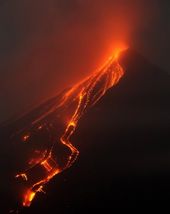
© AFPMembers of the Bournemouth Spartans swimming club taking to the Channel for their Christmas Day swim in Boscombe near Bournemouth, Dorset.
The traditional British Christmas: a cosy fire, turkey, mince pies and sherry. Or, for some brave souls, stripping off in the bitter winter chill and charging headlong into the sea.
In Brighton, and at Porthcawl on the south Wales shore, hundreds of people, some in fancy dress, joined in the annual festive dips, to the bemusement of onlookers.
In the capital, swimmers in more traditional bathing costumes and caps made do by plunging into The Serpentine lake in Hyde Park.
The Brighton Swimming Club's traditional dip -- bracing might best describe it -- was first recorded in 1885.
"Spectators-wise, I've never seen so many people here. There must have been around 1,500 to 2,000," said club chairman John Ottaway.



